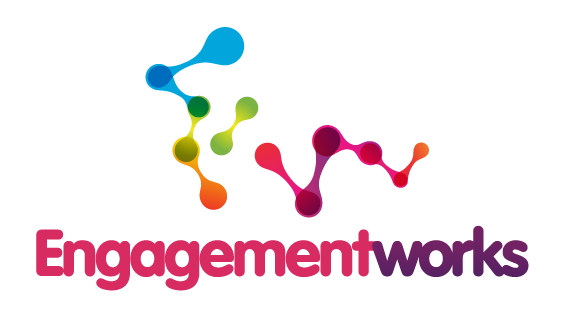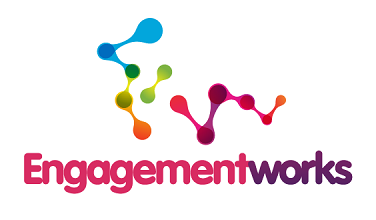Internal communication is something that many organisations talk about but something few do well. That’s disappointing, given that staff are a key stakeholder in any organisation and “our greatest resource”, if the rhetoric of management gurus is to be believed.
Internal communication is often a task that is delegated to a communication team to deliver. A newsletter gets produced, an intranet is built. CEOs and second-level managers have regular columns prepared for them that are published through those channels. Occasional roadshows are put together. Lots of carefully crafted and approved PowerPoint slides are prepared. Annual engagement surveys and performance reviews are completed. Boxes are ticked. Internal engagement is done.
A reality is that staff do their own engagement. They talk with people in other divisions. They socialise at work and in their own time. They’re smart people and know how the organisation works, probably better than most. If they’re dedicated and committed they’ve probably got a bunch of great ideas about how things could be done better, ideas for dealing with challenges from competitors, sales pitches, managing relationships with suppliers and corporate clients. You name it. Some may be fortunate to work in a space where their initiative is appreciated and encouraged. Others may feel undervalued and even exploited.
Whatever the case may be, staff are usually better at internal communication than are their managers. Why? Because they do it because they want to, not because they have to. They understand the value that comes from it. Most of it may be informal. So what if it is? That’s how relationships are forged.
Communication isn’t rocket science, irrespective of the context. Despite what politicians may believe it starts with listening. It’s underpinned by a culture where people are treated as equals, irrespective of their position on the management food chain. People who get paid lots of money are idiots if they think they’re smarter than people who earn less than they do.
There’s never a good time for bad news. Openness and honesty are vital. There’s little harm in senior management letting their underlings know what they’re thinking. Information abhors a vacuum and speculation will soon fill it. That leads to uncertainty and lowers performance.
There’s always a good time for good news. Let your people know they’re doing well and that what they do is appreciated. Those sorts of comments are worth more than money, if the screeds of research about what motivates employees is to be believed.
Good internal communication is underpinned by good processes. It’s about matching the engagement with key decisions or outcomes, or key parts of a project plan. Project planners know how to piece together all of the things that comprise a successful result. They identify the timings and responsibilities for those, as well as the resource requirements, particularly the financial cost. So why then do projects that are specified to the nth degree so often overlook internal communication? Probably because there are some key performance indicators missing in senior managers’ job descriptions.
So rather than diving into a toolbox to look for ways of sorting out internal communication, a good starting point is looking hard at what drives organisational success and building some KPIs that support the delivery of that. How many CEOs and senior managers have KPIs that mention internal engagement outcomes? On many occasions the only person in the organisation with anything like that as part of their job description or outcomes is a communication manager or one of their advisers. They’re probably level 3 or level 4 managers with all of the diluted influence associated with that.
A good test for the priority an organisation bestows on a function is ringing it up and requesting a brief chat with the person who leads internal engagement and communication. Dollars to donuts the person to whom the call is directed won’t be the CEO. They’re probably way too busy doing really important things.
If your organisation is struggling with its internal engagement and communication, you’re not alone. Improving that won’t take a lot of resources, just some time and a commitment to doing things better. At Engagementworks we’re experienced in what works and what doesn’t in the world of internal engagement. We can help lead a process that puts in place some solid building blocks and can deliver positive and enduring results, provided senior managers are committed to those.
Please give us a call. We’re happy to talk and discuss ideas and needs on a no-commitment basis.
Internal communication is often a task that is delegated to a communication team to deliver. A newsletter gets produced, an intranet is built. CEOs and second-level managers have regular columns prepared for them that are published through those channels. Occasional roadshows are put together. Lots of carefully crafted and approved PowerPoint slides are prepared. Annual engagement surveys and performance reviews are completed. Boxes are ticked. Internal engagement is done.
A reality is that staff do their own engagement. They talk with people in other divisions. They socialise at work and in their own time. They’re smart people and know how the organisation works, probably better than most. If they’re dedicated and committed they’ve probably got a bunch of great ideas about how things could be done better, ideas for dealing with challenges from competitors, sales pitches, managing relationships with suppliers and corporate clients. You name it. Some may be fortunate to work in a space where their initiative is appreciated and encouraged. Others may feel undervalued and even exploited.
Whatever the case may be, staff are usually better at internal communication than are their managers. Why? Because they do it because they want to, not because they have to. They understand the value that comes from it. Most of it may be informal. So what if it is? That’s how relationships are forged.
Communication isn’t rocket science, irrespective of the context. Despite what politicians may believe it starts with listening. It’s underpinned by a culture where people are treated as equals, irrespective of their position on the management food chain. People who get paid lots of money are idiots if they think they’re smarter than people who earn less than they do.
There’s never a good time for bad news. Openness and honesty are vital. There’s little harm in senior management letting their underlings know what they’re thinking. Information abhors a vacuum and speculation will soon fill it. That leads to uncertainty and lowers performance.
There’s always a good time for good news. Let your people know they’re doing well and that what they do is appreciated. Those sorts of comments are worth more than money, if the screeds of research about what motivates employees is to be believed.
Good internal communication is underpinned by good processes. It’s about matching the engagement with key decisions or outcomes, or key parts of a project plan. Project planners know how to piece together all of the things that comprise a successful result. They identify the timings and responsibilities for those, as well as the resource requirements, particularly the financial cost. So why then do projects that are specified to the nth degree so often overlook internal communication? Probably because there are some key performance indicators missing in senior managers’ job descriptions.
So rather than diving into a toolbox to look for ways of sorting out internal communication, a good starting point is looking hard at what drives organisational success and building some KPIs that support the delivery of that. How many CEOs and senior managers have KPIs that mention internal engagement outcomes? On many occasions the only person in the organisation with anything like that as part of their job description or outcomes is a communication manager or one of their advisers. They’re probably level 3 or level 4 managers with all of the diluted influence associated with that.
A good test for the priority an organisation bestows on a function is ringing it up and requesting a brief chat with the person who leads internal engagement and communication. Dollars to donuts the person to whom the call is directed won’t be the CEO. They’re probably way too busy doing really important things.
If your organisation is struggling with its internal engagement and communication, you’re not alone. Improving that won’t take a lot of resources, just some time and a commitment to doing things better. At Engagementworks we’re experienced in what works and what doesn’t in the world of internal engagement. We can help lead a process that puts in place some solid building blocks and can deliver positive and enduring results, provided senior managers are committed to those.
Please give us a call. We’re happy to talk and discuss ideas and needs on a no-commitment basis.

 RSS Feed
RSS Feed
